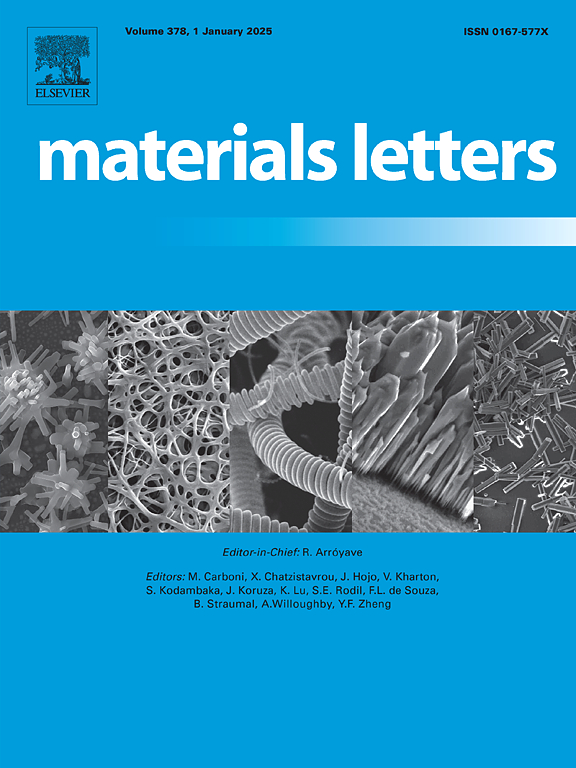Modification of Cu2O photocathodes with Cu and Pt as dual co-catalysts for significantly improved photoelectrochemical water splitting
IF 2.7
4区 材料科学
Q3 MATERIALS SCIENCE, MULTIDISCIPLINARY
引用次数: 0
Abstract
Composing with a co-catalyst is considered an effective way to improve the performance of a pure photocatalyst. In this paper, Pt-Cu/Cu2O with localized surface plasmon resonance (LSPR) effect was prepared via a one-pot method, followed by the electrodeposition of Pt. As plasmon photosensitizers, Cu and Pt, were used to increase the light trapping and collect the hot electrons, and Pt can also be used as an electron-harvesting layer to provide reactive active sites. This synergistic effect of the bimetallic system significantly enhances the photoelectrocatalytic performance of the semiconductor material. The optimized Pt(8)-Cu/Cu2O sample achieved a high photocurrent density of 1.38 µA/cm2 at 1.23 V vs. RHE, which is increased by a factor of 4.18 compared to the pure Cu2O. The photoelectrochemical water-splitting synergistic mechanism was verified by surface photovoltage (SPV), photocurrent density, impedance tests, etc.
以Cu和Pt为双助催化剂改性Cu2O光电阴极,显著改善了光电化学水分解
与助催化剂组合被认为是提高纯光催化剂性能的有效途径。本文通过一锅法制备了具有局域表面等离子体共振(LSPR)效应的Pt-Cu/Cu2O,然后电沉积Pt。作为等离子体光敏剂,Cu和Pt可以增加光捕获和收集热电子,Pt也可以作为电子收获层提供反应活性位点。双金属体系的这种协同效应显著提高了半导体材料的光电催化性能。优化后的Pt(8)-Cu/Cu2O样品在1.23 V时的光电流密度为1.38 μ a /cm2,比纯Cu2O提高了4.18倍。通过表面光电压(SPV)、光电流密度、阻抗等测试,验证了光电化学解水协同机理。
本文章由计算机程序翻译,如有差异,请以英文原文为准。
求助全文
约1分钟内获得全文
求助全文
来源期刊

Materials Letters
工程技术-材料科学:综合
CiteScore
5.60
自引率
3.30%
发文量
1948
审稿时长
50 days
期刊介绍:
Materials Letters has an open access mirror journal Materials Letters: X, sharing the same aims and scope, editorial team, submission system and rigorous peer review.
Materials Letters is dedicated to publishing novel, cutting edge reports of broad interest to the materials community. The journal provides a forum for materials scientists and engineers, physicists, and chemists to rapidly communicate on the most important topics in the field of materials.
Contributions include, but are not limited to, a variety of topics such as:
• Materials - Metals and alloys, amorphous solids, ceramics, composites, polymers, semiconductors
• Applications - Structural, opto-electronic, magnetic, medical, MEMS, sensors, smart
• Characterization - Analytical, microscopy, scanning probes, nanoscopic, optical, electrical, magnetic, acoustic, spectroscopic, diffraction
• Novel Materials - Micro and nanostructures (nanowires, nanotubes, nanoparticles), nanocomposites, thin films, superlattices, quantum dots.
• Processing - Crystal growth, thin film processing, sol-gel processing, mechanical processing, assembly, nanocrystalline processing.
• Properties - Mechanical, magnetic, optical, electrical, ferroelectric, thermal, interfacial, transport, thermodynamic
• Synthesis - Quenching, solid state, solidification, solution synthesis, vapor deposition, high pressure, explosive
 求助内容:
求助内容: 应助结果提醒方式:
应助结果提醒方式:


